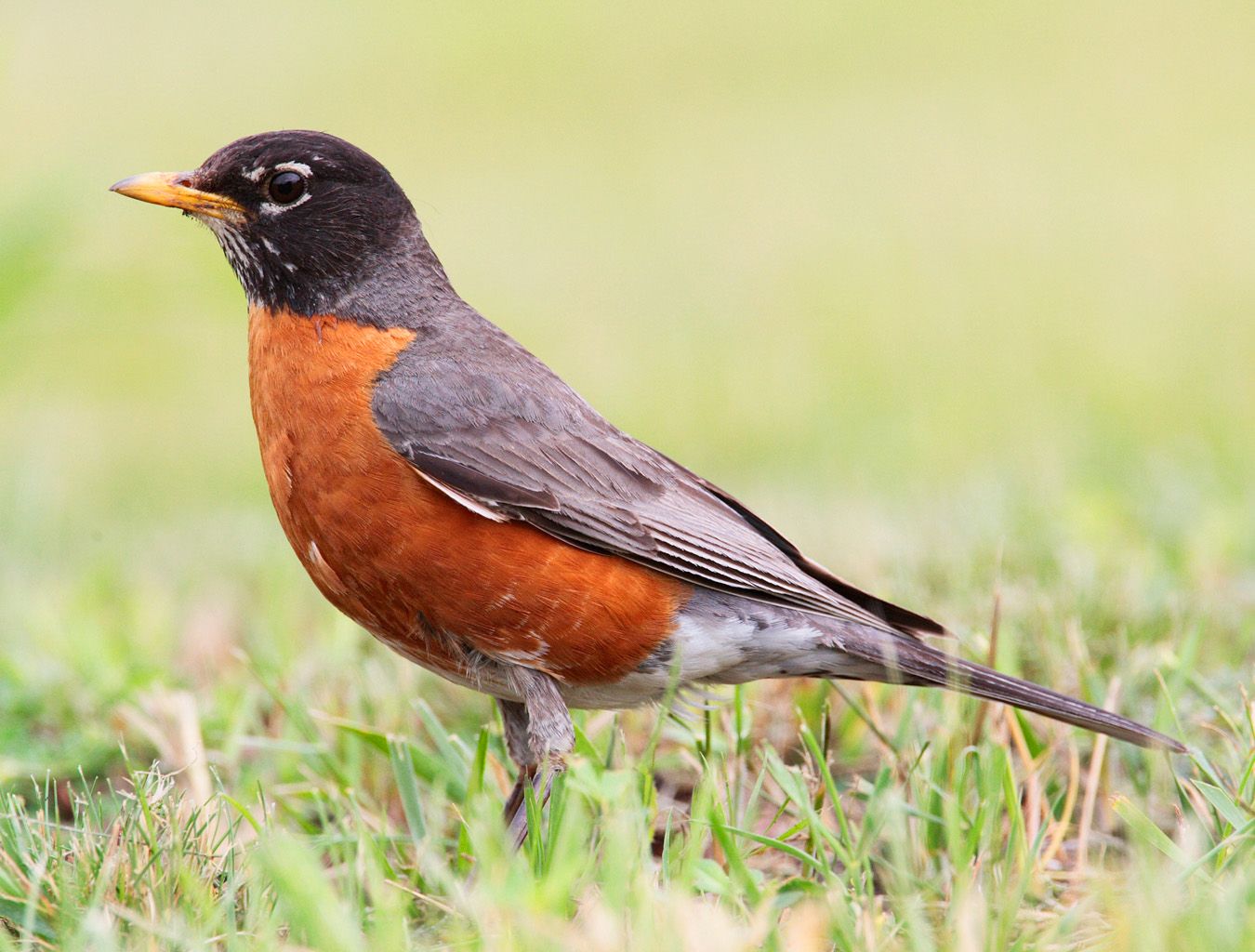
In the verdant tapestry of North America’s avian landscape, few figures command as much affectionate recognition as the American robin, *Turdus migratorius*. This migratory marvel, a distinguished member of the true thrush genus within the wider Turdidae family, carries a name that echoes across the Atlantic, bestowed upon it by early settlers who saw in its striking reddish-orange breast a resemblance to the smaller European robin. Yet, this shared moniker belies a profound evolutionary divergence, for while both are beloved harbingers of changing seasons, the American robin is no close kin to its Old World counterpart, which belongs instead to the distinct Old World flycatcher family.
Indeed, the American robin is not merely a bird; it is a ubiquitous presence, a consistent thread in the fabric of the continent’s natural and urban environments. From its early morning carols that herald the dawn to its characteristic strut across manicured lawns, it is a creature whose familiarity often belies the fascinating complexity of its biology, behavior, and remarkable adaptability. Its story is one woven with the intricate threads of migration, genetic diversity, and a surprising resilience that has allowed it to thrive as North America’s most abundant landbird.
This exploration delves into the multifaceted life of *Turdus migratorius*, peeling back the layers of common observation to reveal the profound scientific insights that shape our understanding of this iconic species. We journey from its ancient origins and taxonomic intricacies to the subtle variations that distinguish its numerous subspecies, all while marveling at the sheer scale of its population and the intricate behaviors that define its daily existence. Prepare to rediscover the American robin, not just as a fleeting glimpse in your garden, but as a subject of sophisticated ecological and evolutionary wonder.
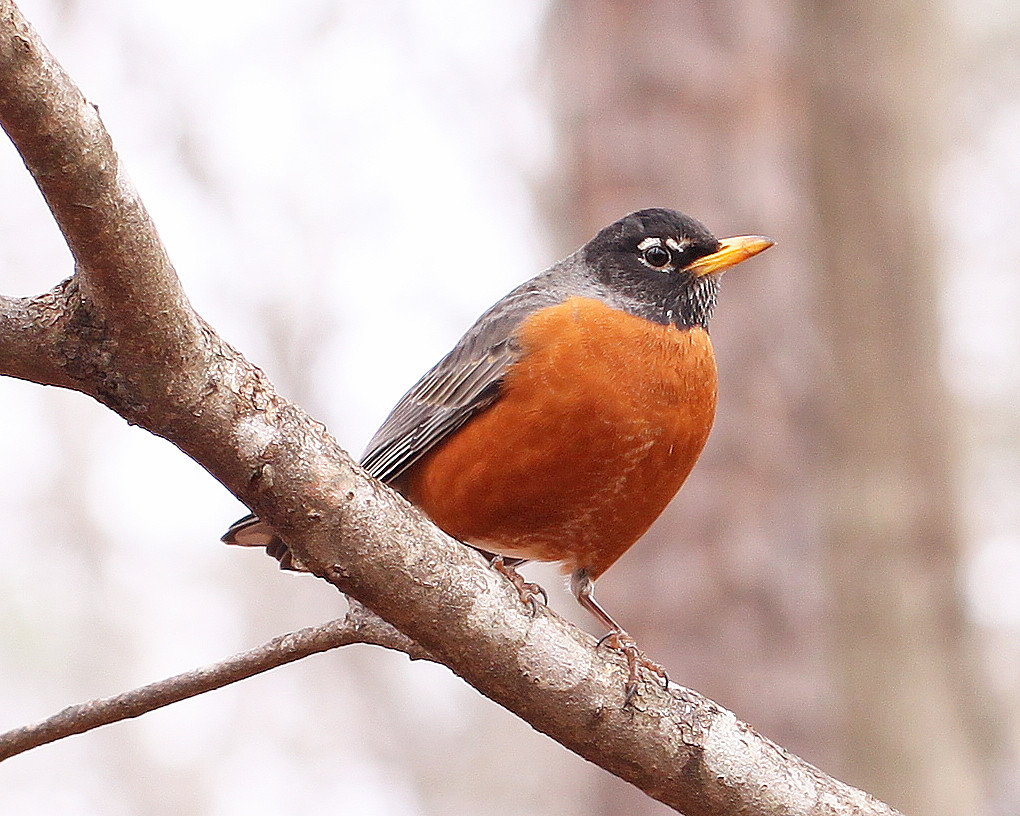
1. The Enduring Legacy of the American Robin: A North American Icon
From bustling city parks to serene woodland edges, the American robin stands as an enduring emblem of North America’s wild heart, a bird so ingrained in the collective consciousness that its appearance often stirs deep-seated feelings of renewal and transition. Its reddish-orange breast, a splash of vibrant color against its otherwise muted plumage, is the very feature that gifted it its name, a nostalgic nod by colonial settlers to the European robin, a bird of similar hue from their ancestral lands. This historical nomenclature, however, masks a significant evolutionary distance, distinguishing the American robin not as a direct relative, but as a New World thrush with its own unique lineage and biological narrative.
This beloved songbird, a large North American thrush, has become synonymous with the changing seasons, especially as a harbinger of spring. Its widespread distribution across the continent ensures that its distinctive profile—gray-brown upperparts, rusty breast, and white-tipped outer tail feathers—is a familiar sight to millions. The sheer ubiquity of the American robin underscores its ecological success and its profound integration into diverse North American ecosystems, from dense deciduous forests to the cultivated landscapes of towns and cities.
Its iconic status transcends mere visual recognition, extending into the realm of local pride, as it proudly holds the distinction of being the state bird for Connecticut, Michigan, and Wisconsin. This cultural embedding highlights the robin’s significance beyond its biological role, positioning it as a symbol deeply cherished and widely recognized across various geographical and social contexts. The enduring legacy of the American robin is thus a testament to its compelling presence in both the natural world and the human imagination.
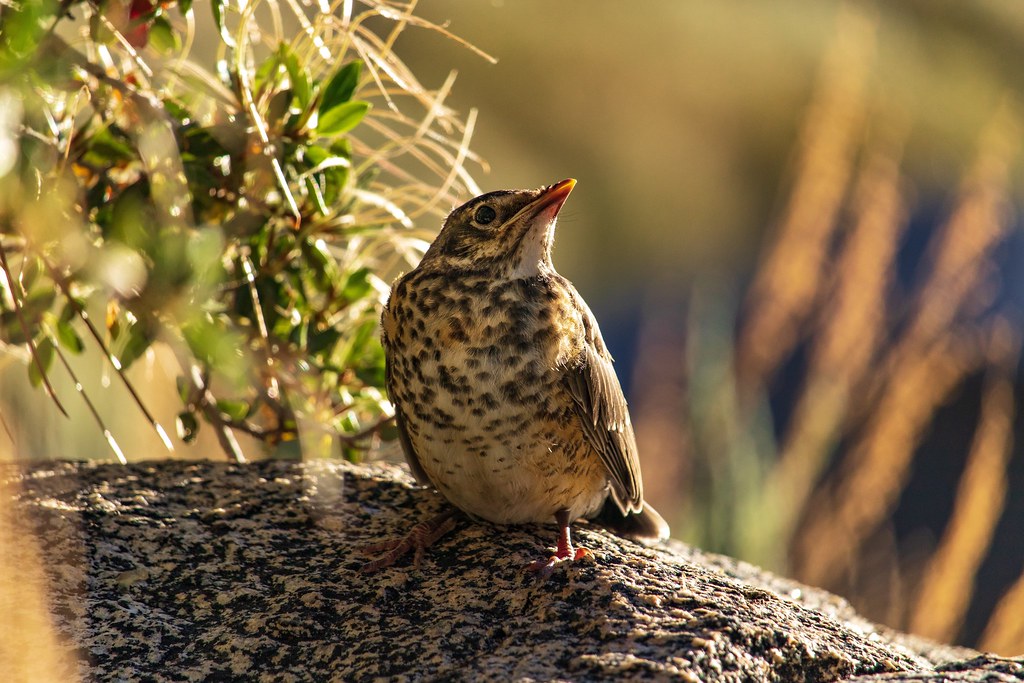
2. Unraveling the American Robin’s Taxonomy: A Journey Through Its Scientific Classification
The journey to understand the American robin begins with its precise placement within the grand scheme of life, a classification meticulously laid out by Carl Linnaeus in 1766. It was he who first formally described this species in the twelfth edition of his *Systema Naturae*, bestowing upon it the binomial name *Turdus migratorius*. This elegant Latin designation is profoundly descriptive, with *turdus* translating to “thrush” and *migratorius* stemming from *migrare*, meaning “to migrate,” perfectly capturing a fundamental aspect of the bird’s life history.
Modern genetic inquiries have illuminated the American robin’s evolutionary path with increasing clarity, offering compelling insights into its closest relatives within the extensive thrush family. A 2020 genetic study, reinforcing earlier findings from 2007, pinpointed the rufous-collared thrush (*T. rufitorques*) of Central America as its nearest kin. While outwardly possessing distinct plumage, these two species share remarkable similarities in their vocalizations and behavioral patterns, suggesting a shared recent ancestry despite their visual differences. This connection firmly places the American robin within a broader group of Central American thrushes.
Further extending this fascinating familial tree, both the 2007 and 2020 studies identified the black thrush (*T. infuscatus*) and sooty thrush (*T. nigrescens*), also native to Central America, as the next closest relatives beyond the immediate trio. These findings suggest a compelling narrative of a relatively recent spread northward into North America, with the Central American continent potentially serving as an evolutionary cradle for this widespread species. This contrasts markedly with older, less robust studies of the mitochondrial cytochrome b gene, which had weakly suggested a distant relationship with African species such as the Kurrichane thrush and the olive thrush, an idea now largely supplanted by more comprehensive genetic evidence.
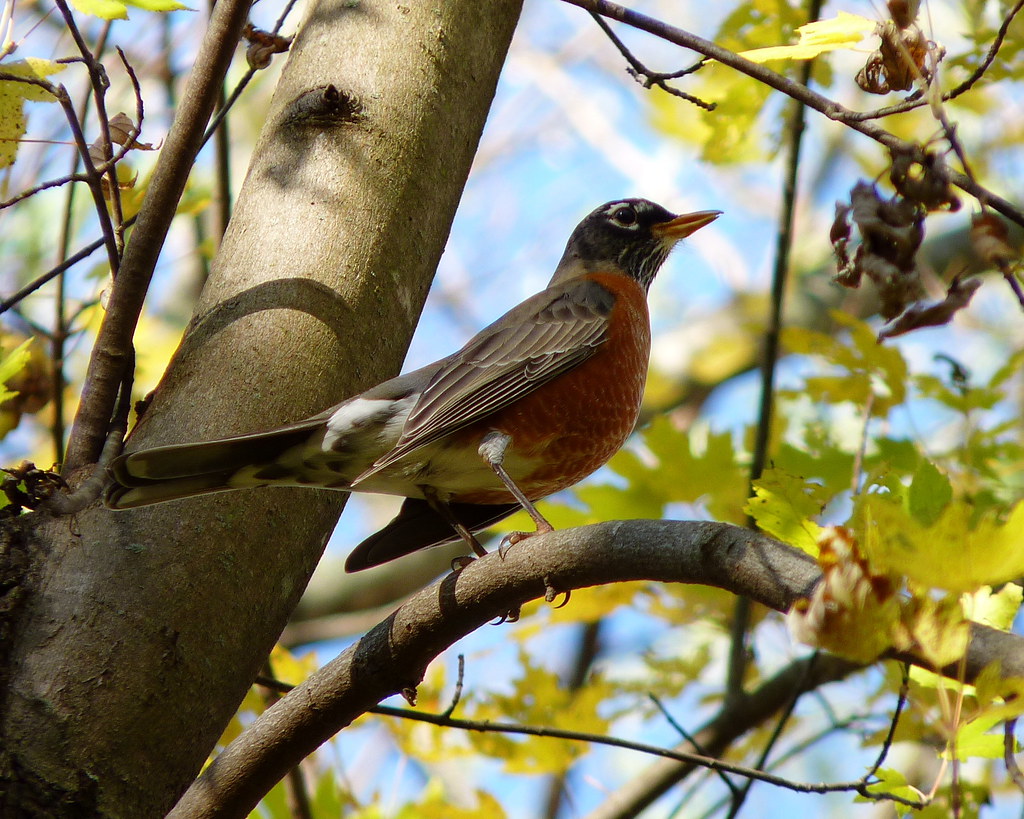
3. A Visual Symphony: Decoding the American Robin’s Distinctive Appearance
The American robin presents a visual symphony of earthy tones punctuated by a vibrant splash of color, a combination that makes it instantly recognizable to even the most casual observer. The eastern subspecies, *T. m. migratorius*, serves as a prime example of its elegant proportions, typically measuring between 23 to 28 cm (9.1 to 11.0 inches) in length, with a graceful wingspan ranging from 31 to 41 cm (12 to 16 inches). Averaging about 77 grams (2.7 ounces) in weight, this agile bird carries a form perfectly adapted to its dynamic lifestyle.
An adult robin’s plumage is a study in contrasts and subtle transitions. The head, a striking feature, can vary from a deep, lustrous jet black to a softer gray, elegantly framed by distinct white eye arcs and prominent white supercilia. The throat is a canvas of white, adorned with bold black streaks, leading down to a belly and undertail coverts of pristine white. The back assumes a rich brown hue, providing a backdrop for the bird’s most celebrated feature: the reddish-orange breast, whose coloration can range from a deep, almost maroon red to a delicate, peachy orange. The bill is predominantly yellow, often tipped with a variable dark shade that becomes more expansive during the winter months, while its legs and feet maintain a consistent brown.
Subtle yet significant differences exist between the es, adding another layer of visual nuance to the species. Females generally exhibit a duller coloration than their male counterparts, often displaying a faint brown tint to the head and slightly less vibrant underparts. While these distinctions offer a general guide, some individuals present a challenge to accurate sexing based solely on plumage, highlighting the continuum of natural variation. Juveniles, still navigating their journey to full maturity, appear paler than adult males, characterized by distinctive dark spots adorning their breasts and whitish wing coverts, a temporary phase before they fully adopt the adult’s refined appearance. Even first-year birds, while not easily distinguishable from adults, typically retain a duller aspect, with males often resembling adult females, and a small percentage holding onto residual juvenile wing coverts or other feathers, a charming reminder of their recent fledging.
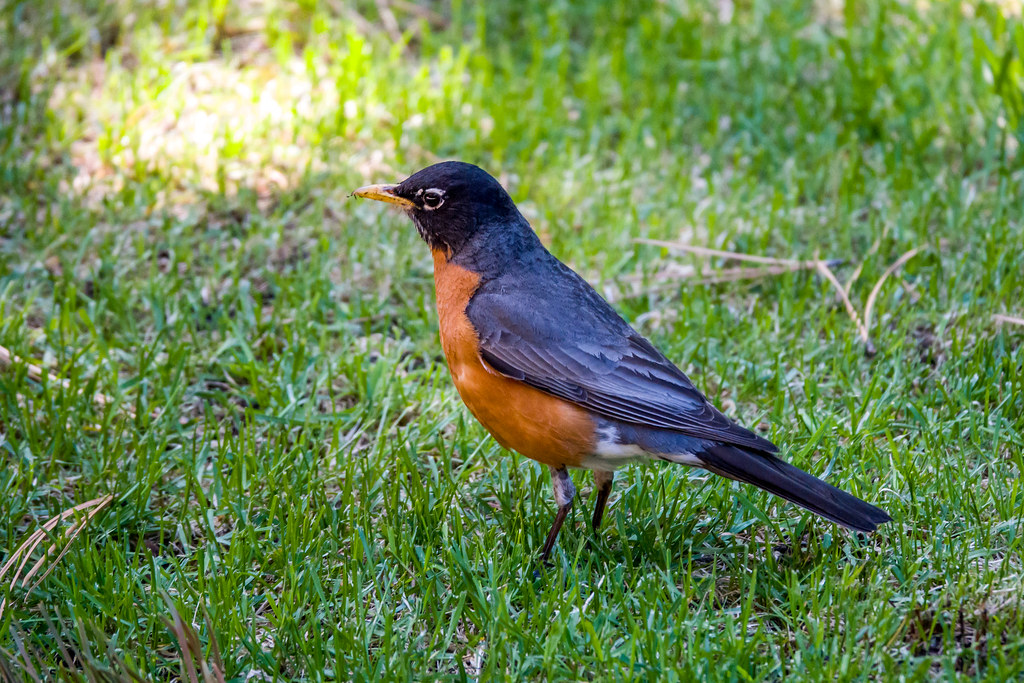
4. The Remarkable Abundance and Far-Reaching Distribution of *Turdus migratorius*
Beyond its familiar appearance and melodic calls, one of the most striking aspects of the American robin is its sheer numerical dominance across the North American continent. According to the authoritative Partners in Flight database from 2019, *Turdus migratorius* reigns supreme as the most abundant landbird in North America, boasting an astounding population of approximately 370 million individuals. This makes it more numerous than even the red-winged blackbirds, introduced European starlings, mourning doves, and house finches, cementing its status as an ecological success story and a testament to its remarkable adaptability.
This avian omnipresence is further underscored by its expansive distribution, a testament to its ability to thrive across a vast array of ecological zones. The species breeds throughout the majority of North America, extending its domain from the expansive wilderness of Alaska and the northern reaches of Canada southward to the verdant landscapes of northern Florida and deep into Mexico. This extensive breeding range speaks volumes about the robin’s physiological and behavioral flexibility, allowing it to colonize and flourish in climates and habitats as diverse as boreal forests and subtropical urban centers.
While some robins display a remarkable tenacity, occasionally overwintering in the colder climes of the northern United States and southern Canada, the majority embark on a grand migratory journey. They seek refuge from the harshest winter conditions, traveling south of Canada, along the Gulf Coast, through Florida, and into central Mexico, as well as along the milder Pacific Coast. This annual pilgrimage typically sees them departing their northern breeding grounds by the end of August, beginning their return flight north in February and March, with the exact timing intricately tied to latitude and prevailing climatic conditions, a rhythmic dance dictated by the seasons. The migratory distances are not uniform, with studies showing robins tagged in Alaska traveling as much as 3.5 times further than those tagged in Massachusetts, revealing the nuanced strategies employed across different populations.
Beyond its native North American stronghold, the American robin is an exceedingly rare and captivating vagrant to the distant shores of western Europe, adding a touch of exoticism to the European avian landscape. Records in Great Britain, where 29 sightings had been documented up to the end of 2022, underscore the infrequent yet notable occurrences of these transatlantic wanderers. Further reports confirm its sporadic appearance in diverse locations such as Greenland, Sweden, Jamaica, Hispaniola, Puerto Rico, and Belize, each sighting a testament to the remarkable, albeit accidental, navigational feats of individual birds.
When identified to the subspecies level, most vagrants observed in Europe are typically the eastern subspecies, *T. m. migratorius*, reflecting its vast breeding range and likelihood of oceanic dispersal. However, the birds sighted in Greenland have included the Newfoundland subspecies, *T. m. nigrideus*, indicating specific migratory pathways or displacement events. Furthermore, some of the robins that overshoot their southern wintering grounds may belong to the southern subspecies, *T. m. achrusterus*, showcasing the subtle geographical origins of these far-flung travelers and adding a layer of intrigue to their unexpected appearances on distant continents.
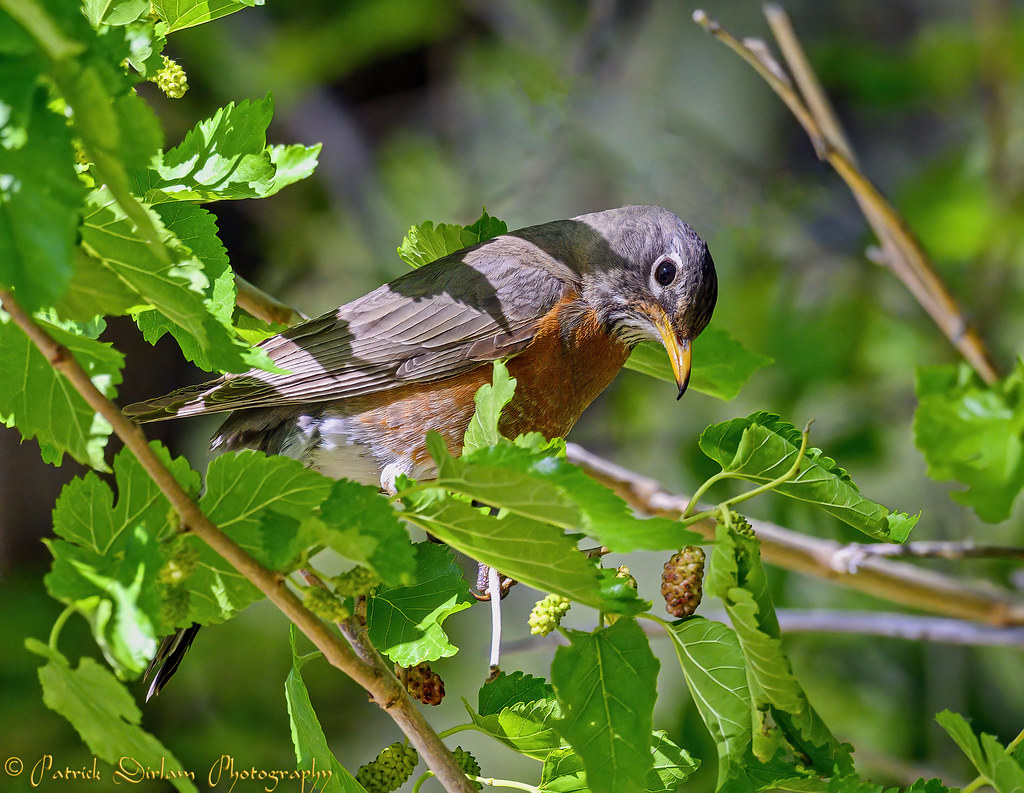
5. The Enigmatic World of American Robin Subspecies: Subtle Variations Across a Continent
The American robin, despite its seemingly uniform appearance to the casual eye, is a species rich in subtle geographical variations, formally recognized through its seven accepted subspecies. These distinct populations, while largely intergrading with one another and often only weakly defined, offer a fascinating glimpse into the micro-evolutionary adaptations that allow the species to thrive across its immense North American range. One subspecies, however, stands apart as particularly distinctive, hinting at a more isolated evolutionary trajectory.
Among these nuanced forms, *T. m. nigrideus* commands attention, breeding along the coastal expanse from northern Quebec to Labrador and Newfoundland. These birds, uniformly darker or even blackish on the head with a dark gray back, possess underparts that exhibit a slightly richer red hue compared to the nominate subspecies. In contrast, *T. m. migratorius*, the nominate and most widely distributed subspecies, breeds extensively across the U.S. and Canada, extending from Alaska and northern Canada eastward to New England, and southward to states like Maryland and North Carolina, representing the archetypal American robin.
Journeying further south and west, we encounter additional fascinating variations. *T. m. achrusterus* breeds from southern Oklahoma eastward to Maryland and Virginia, and southward into Florida and the Gulf Coast states. This subspecies is marginally smaller than its eastern counterpart, characterized by black feathers on the forehead and crown tipped with pale gray, and noticeably paler underparts. The Pacific Northwest introduces *T. m. caurinus*, which breeds from southeastern Alaska through coastal British Columbia to Washington and northwestern Oregon. Slightly smaller than the eastern subspecies and notably dark-headed, it exhibits a restricted amount of white on the tips of its outer two tail feathers, a subtle yet distinguishing mark.
Moving inland and further south, *T. m. propinquus* takes residence, breeding from southeastern British Columbia south to southern California and northern Baja California. This subspecies matches or slightly exceeds the eastern subspecies in size but presents a paler, more heavily brownish-gray appearance. It possesses very little white on the tip of the outermost tail feathers, and notably, some birds, likely females, may almost entirely lack any red coloration below, while males are typically darker and can display pale or whitish sides to the head, showcasing a greater degree of individual and ual variation within this regional population.
Finally, we arrive at the two most geographically and morphologically distinct subspecies. *T. m. phillipsi* is a resident of Mexico, ranging south to central Oaxaca. It is slightly smaller than the western subspecies but is distinguished by a larger bill; the male’s underparts, rather than being brick-red like the eastern subspecies, adopt a rustier tone. Most notably, *T. m. confinis* breeds above 1,000 meters (3,300 feet) in the Sierra de la Laguna mountains of southern Baja California. This isolated, non-migratory subspecies is remarkably distinctive, being relatively small and the palest of all, with uniform pale gray-brown on the head, face, and upperparts, complemented by pale buffy orange underparts. It typically lacks any white spots at the tips of the outer tail feathers, which instead feature white edges, a unique trait that has occasionally led to its classification as a separate species, though both the American Ornithologists’ Union and the IOC World Bird List currently maintain its status as a subspecies, albeit in a different group from the other six, underscoring its unique evolutionary path.
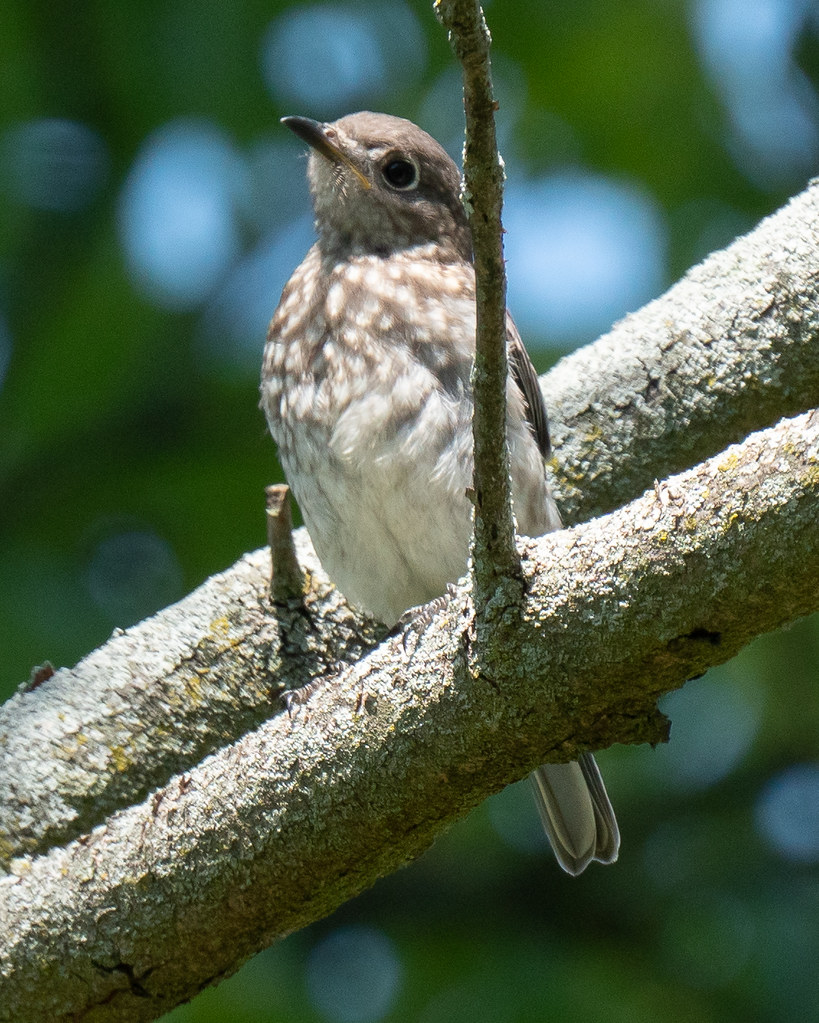
6. The Rhythmic Dance of Migration: American Robins and Their Diverse Habitats
For the American robin, life is often a rhythmic dance dictated by the changing seasons, a grand migratory ballet that sees millions traverse vast distances across the continent. While some individuals exhibit a remarkable hardiness, choosing to overwinter in the northern reaches of the United States and southern Canada, the prevailing strategy for the species is one of significant annual movement. By the end of August, a noticeable southward exodus begins, with the majority of the population seeking the milder climates stretching from Florida and the Gulf Coast to central Mexico, as well as along the Pacific Coast, before embarking on their northward return in February and March, the exact timing synchronized with the subtle cues of local latitude and climate.
The scope and distance of these migratory journeys are far from uniform, a fascinating testament to regional adaptations and individual strategies. A study focusing on tagged robins revealed a remarkable disparity: individuals from Alaska were documented to travel as much as 3.5 times further across seasons than their counterparts tagged in Massachusetts. This insight underscores the intricate interplay between geographical origin, environmental pressures, and the evolved migratory patterns that shape the life history of *Turdus migratorius*, revealing a species that is both widely distributed and regionally specialized in its nomadic tendencies.
During the vibrant breeding season, the American robin displays a preference for a variety of habitats, seamlessly integrating into both natural and human-modified landscapes. Its breeding grounds encompass traditional woodlands, the more open expanses of farmland, and the bustling familiarity of urban areas, demonstrating a profound adaptability. In the southernmost regions of the Deep South, where breeding becomes less common, robins exhibit a particular affinity for large shade trees nestled within residential lawns, a choice that speaks to their comfort and success in close proximity to human habitation. This versatility in habitat selection during breeding highlights their capacity to exploit diverse ecological niches.
As the seasons shift and winter descends, the robin’s habitat preferences remain largely similar, yet they embrace even more open areas in their search for sustenance and shelter. This seasonal adjustment reflects a flexible approach to resource availability, allowing them to capitalize on dispersed food sources during the leaner months. The ability of some populations to bravely endure northern winters, alongside the grand migrations of others, paints a comprehensive picture of a species whose life is intrinsically linked to the ebb and flow of its diverse geographical and climatic surroundings.
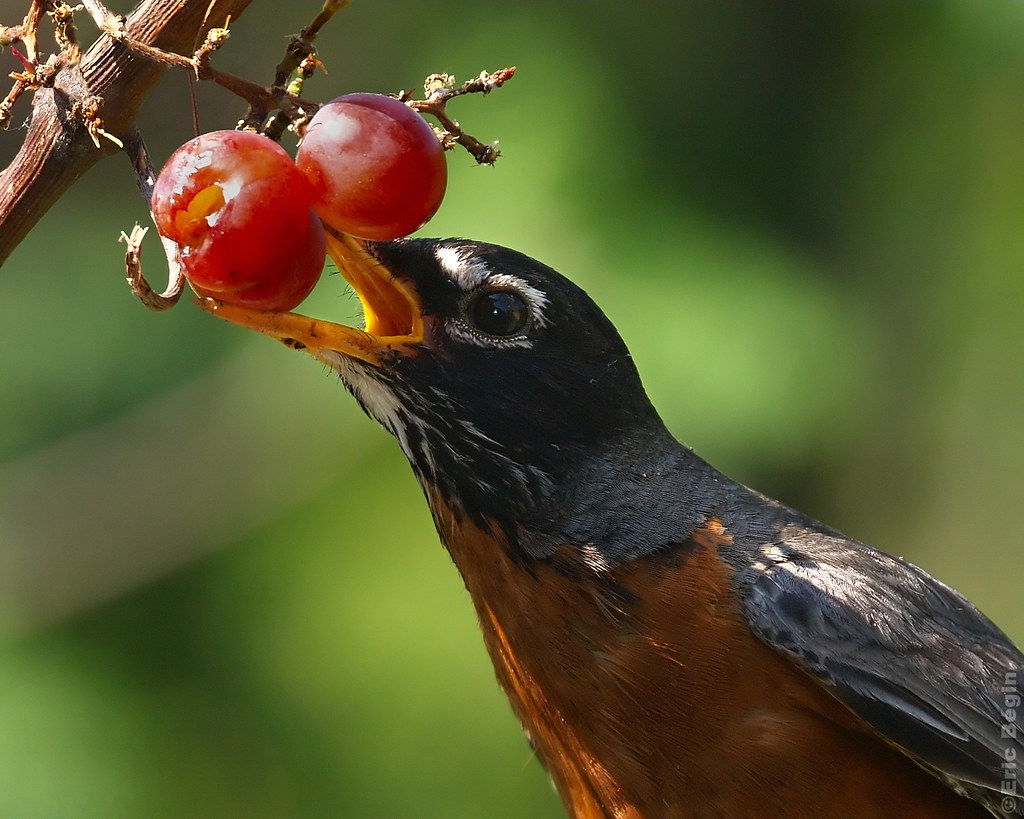
7. A Day in the Life: Behavior, Diet, and Foraging Prowess of the American Robin
The daily life of the American robin is a bustling affair, largely orchestrated by the rhythms of daylight and the constant quest for sustenance. Primarily active during the day, these resourceful birds exhibit distinct social behaviors that shift with the seasons. In their wintering grounds, they forsake the solitary territoriality of summer for large, communal roosts, assembling in vast flocks at night within the protective canopy of secluded swamps or dense vegetation. As dawn breaks, these congregations dissolve, and the birds disperse into smaller groups, embarking on their daily foraging expeditions for fruits and berries, a strategic adaptation to efficiently exploit available resources.
The robin’s diet is a balanced and opportunistic mosaic, carefully tailored to the fluctuating availability of food throughout the year. Approximately 40 percent of their intake consists of small invertebrates, a category that includes the ever-popular earthworms, along with beetle grubs, caterpillars, and grasshoppers. The remaining 60 percent is dedicated to a rich assortment of wild and cultivated fruits and berries, a dietary flexibility that is pivotal to their survival. This ability to readily switch to a fruit-heavy diet is a key evolutionary advantage, enabling them to overwinter significantly farther north than many other North American thrushes, a testament to their adaptability in the face of varying food supplies. Notably, they have been observed flocking to fermented Pyracantha berries, and, after ingesting sufficient quantities, exhibiting intoxicated behaviors such as falling over while walking, a curious consequence of their varied diet. Interestingly, robins have evolved to lose sucrase, making sucrose unpalatable to them, a trait that humans can leverage as a deterrent in fruit orchards.
Their foraging prowess is a spectacle of keen observation and refined instinct, primarily conducted on the ground where they seek out soft-bodied invertebrates. Earthworms, a staple of their diet, are typically located by sight, though their auditory senses also play a crucial role. Once a target is identified, the robin swiftly pounces, seizing its prey and expertly pulling it from the soil. Nestlings, the most vulnerable members of the robin family, are predominantly nourished with earthworms and other soft-bodied animal prey, ensuring a rich supply of protein essential for their rapid growth and development. In certain coastal regions, particularly for the northwestern subspecies (*T. m. caurinus*), robins have adapted to forage on beaches, expanding their dietary repertoire to include insects and small mollusks, showcasing their remarkable adaptability to diverse ecosystems.
The sensory toolkit employed by the American robin in its hunt for prey is remarkably sophisticated, utilizing auditory, visual, olfactory, and potentially even vibrotactile cues, with vision reigning as the predominant mode of detection. Their characteristic foraging behavior—a series of short hops followed by a distinctive head cock to the left, right, or forward—is a direct manifestation of their visual and auditory acuity, allowing them to pinpoint the subtle movements of subterranean prey. Experiments have even demonstrated their capacity to locate earthworms underground solely through their acute listening skills, underscoring the depth of their sensory capabilities. In urban environments, it is a common sight to witness robins congregating in numbers shortly after lawns are mowed or sprinklers are activated, instinctively capitalizing on the exposed and more accessible invertebrate populations, a clear demonstration of their opportunistic and intelligent foraging strategies.
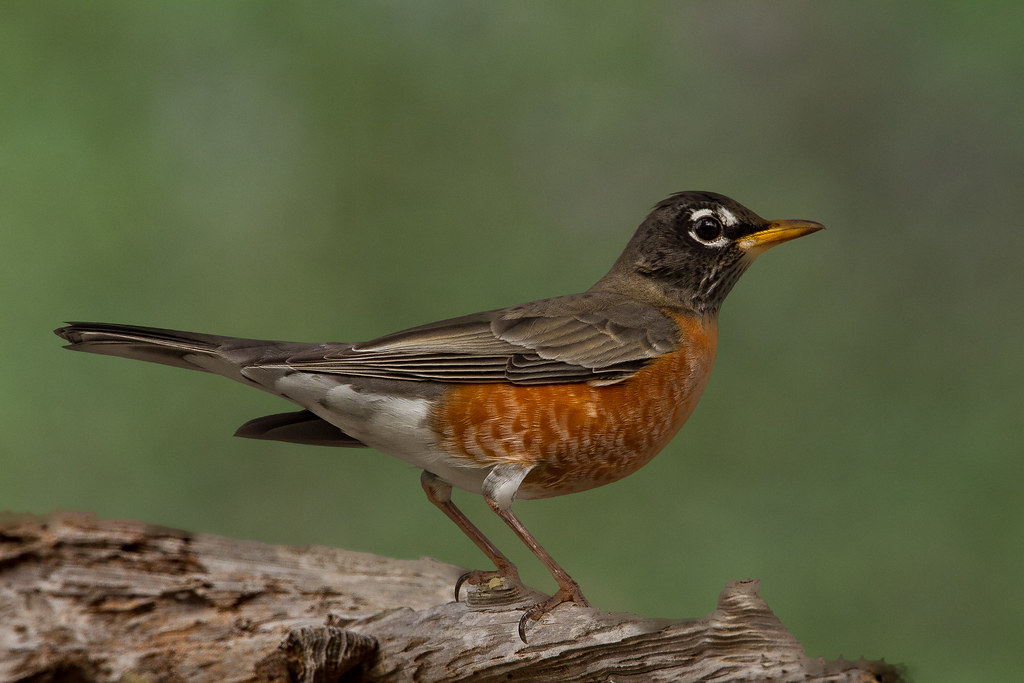
8. The Intricate Rituals of Breeding and the Cycle of Life
The vibrant spirit of the American robin truly blossoms with the onset of the breeding season, a period commencing almost immediately upon their return to summer territories. As one of North America’s earliest birds to lay eggs, the female takes on the solitary, yet monumental, task of constructing the nest. This architectural marvel typically finds its perch 1.5 to 4.5 meters above the ground, often nestled within a dense bush or securely cradled in a tree fork.
Her chosen materials are a testament to nature’s ingenuity: an outer foundation meticulously crafted from long, coarse grass, twigs, salvaged paper, and soft feathers. This robust structure is then expertly lined with smeared mud, providing essential stability, before being cushioned with an inner layer of fine grass or other soft materials, ensuring a comfortable haven for the future brood. Demonstrating remarkable dedication, the American robin constructs a new nest for each clutch during the breeding season, which typically spans from April to July, yielding two to three broods.
Clutches generally comprise three to five distinct cyan-colored eggs, a breathtaking hue that lends its name to ‘robin egg blue.’ These precious eggs are incubated solely by the female for approximately 14 days. Upon hatching, the altricial chicks emerge and with their eyes still closed, remaining in this vulnerable state for the initial days of their life, utterly dependent on their parents for warmth and sustenance.
For these rapidly developing nestlings, a diet rich in earthworms and other soft-bodied animal prey is paramount, supplemented by a variety of insects and berries as they mature. The cleanliness of the nest is meticulously maintained, as adults diligently collect and remove all waste. Remarkably, all chicks from a single brood typically fledge within two days of each other, gaining the ability for sustained flight just two weeks after leaving the nest, a swift journey towards independence. Sexual maturity is attained at one year of age, though the path to adulthood is fraught with peril; banders have revealed that only about 25% of young robins survive their challenging first year, a stark contrast to the average two-year lifespan, with the longest known wild individual reaching an impressive 14 years.
Read more about: Halle’s Timeless Wonders: Revealing the Enduring Charms of a Historic German City
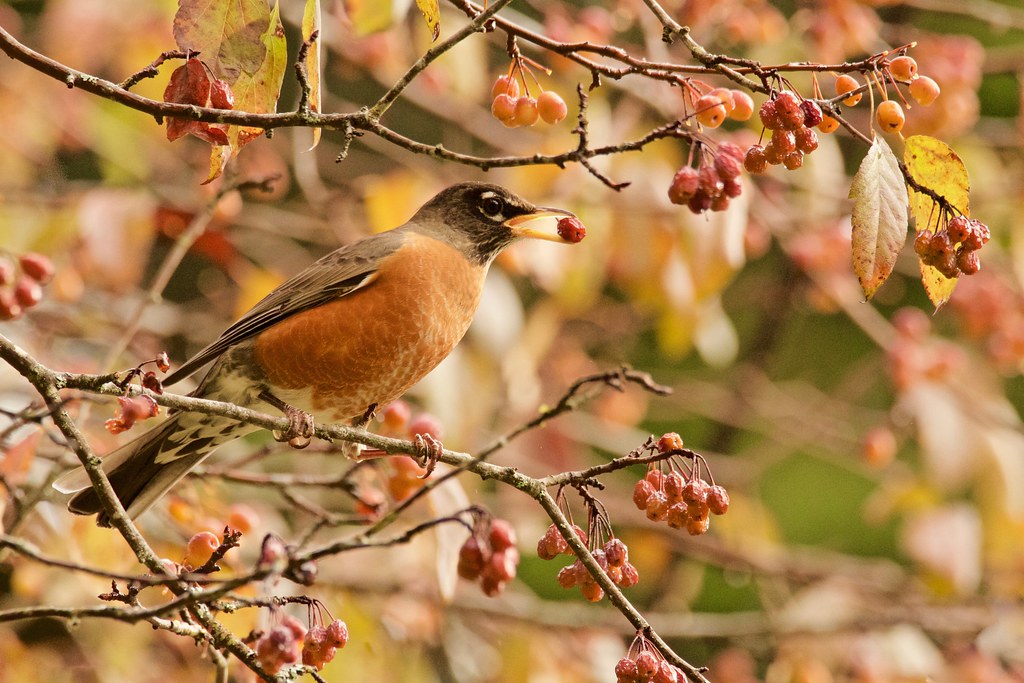
9. The Eloquent Tapestry of Robin Vocalizations
Among the earliest voices to greet the dawn, the male American robin orchestrates a complex and nearly continuous song, a sonic signature that has endeared it to generations. Commonly characterized as a “cheery carol,” his melodic output is a meticulously woven string of discrete units, frequently repeated and interspersed with brief, deliberate pauses. This rich vocal tapestry, much like human dialects, exhibits fascinating regional variations, its style subtly adapting to the specific time of day.
The robin’s song period is extensive, commencing in late February or early March and typically continuing until late July or early August. Some particularly enthusiastic individuals, especially in the eastern regions, may even extend their performances occasionally into September or beyond. They are often among the first, if not *the* first, songbirds to break the silence of pre-dawn hours, and their melodies persist as evening descends, usually delivered from a prominent, high perch within a tree.
Intriguingly, not all subspecies share the same vocal prowess. The song of the San Lucas subspecies, *T. m. confinis*, found in its isolated Baja California habitat, is notably weaker than that of the eastern subspecies, *T. m. migratorius*. It distinctively lacks the clear, resonant notes that characterize the familiar carols of its more widespread relatives, offering a unique regional variation within the species’ auditory landscape.
Beyond their iconic songs, American robins possess an impressive repertoire of calls, each meticulously tailored to convey specific information crucial for survival and social cohesion. These include sharp “scold” calls to alert of a ground predator’s approach and urgent “alarm” calls when a nest or another robin is under direct threat. Even during the fiercely competitive breeding season, when territorial disputes are common, these birds demonstrate a remarkable capacity for collective action, banding together to drive away a common predator, a testament to their complex social intelligence and communication.
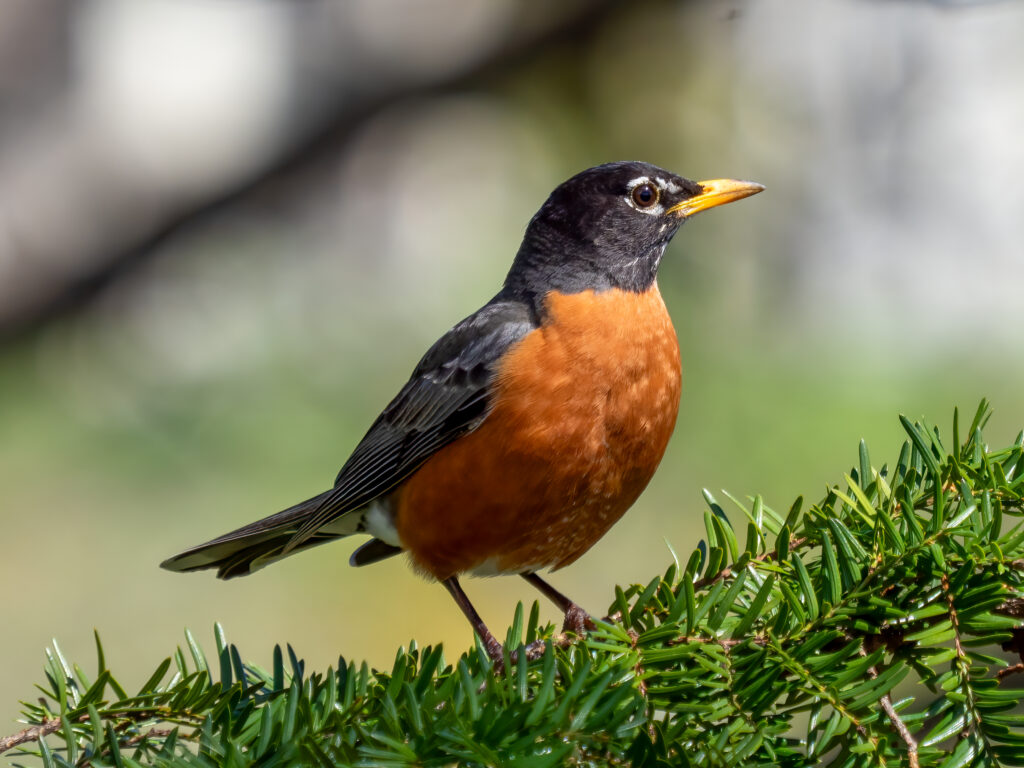
10. Navigating a World of Threats and Predation
The journey from egg to adult robin is fraught with numerous challenges, as these beloved birds occupy a significant position in the food web. The most vulnerable stages of their life cycle, their eggs and newly hatched juveniles, face constant threats from a variety of predators including squirrels, various snake species, and certain opportunistic birds, highlighting the precariousness of early life in the wild.
As robins mature, the roster of potential adversaries expands significantly. Adult robins are primarily preyed upon by swift and agile Accipiter hawks, domestic cats—a pervasive threat in human-dominated landscapes—and larger snakes such as the rat snake and gopher snake. Fledglings, still mastering their flight, are particularly susceptible to ground-dwelling canids like foxes and domestic dogs, which can easily snatch them from their initial forays outside the nest.
Nests themselves are not immune to predation, frequently falling victim to the cunning of raccoons, which are adept at raiding arboreal havens. Moreover, small yet agile carnivores like American martens, ring-tailed cats, and long-tailed weasels pose a direct threat to adult robins. However, the most significant predatory impact on the species likely originates from raptorial birds; an impressive 28 species of raptors have been documented hunting American robins, underscoring their broad presence as a food source within avian predator communities.
Interestingly, adult robins are most vulnerable to predation during the intense focus of breeding activities, when their attention is often divided between vigilance and parental duties. In contrast, robins feeding in large flocks during other seasons exhibit enhanced vigilance, benefiting from the collective awareness of many eyes and ears. While the American robin typically rejects the eggs of the brown-headed cowbird, making brood parasitism rare and generally unsuccessful for the parasite, another subtle threat lurks internally: a study of juvenile robins revealed that a substantial 77.1% were infected with endoparasites, with *Syngamus sp.* being the most commonly encountered, affecting 57.1% of the birds, illustrating the hidden battles they wage for survival.
Read more about: Journey into the Abyss: Uncovering 15 of Earth’s Most Perilous Tourist Destinations for the Adventurous Traveler

11. The American Robin’s Surprising Role in Public Health
Beyond its visible ecological contributions, the American robin plays a less apparent, yet critical, role in public health, particularly concerning the transmission of West Nile virus. This species has been identified as a significant reservoir, acting as a carrier for the virus which is primarily spread by *Culex* mosquitoes, intertwining its biology with human epidemiology in an unexpected way.
While crows and jays are often the first victims whose deaths signal the presence of West Nile virus in a given area, the American robin is, paradoxically, suspected to be a key host responsible for the broader transmission of the virus to humans. This counterintuitive dynamic arises because, unlike crows and jays which succumb quickly to the infection, robins tend to survive longer with the virus in their system. This extended survival period allows them to circulate the virus for a longer duration, thereby infecting a greater number of mosquitoes, which then proceed to transmit the virus to humans and other susceptible species, amplifying the public health risk.
Recognizing this crucial role, scientific efforts have focused on mitigating the robin’s contribution to virus spread, with promising results in vaccine development. A DNA vaccine successfully administered to six 3–5-week-old American robins demonstrated remarkable efficacy. This intramuscularly injected vaccine led to a profound 400-fold decrease in the average viral load within the vaccinated birds.
Such a significant reduction in viral load would, in all likelihood, render these vaccinated robins non-infectious, effectively preventing them from spreading the disease to mosquitoes. While this injectable solution is effective, researchers envision an even more accessible method for broader application: an oral bait. This approach would be considerably easier and more cost-effective to distribute on a larger scale. However, further research is critically needed, as the existing vaccine formulation did not prove effective when administered orally, pointing towards a future avenue for scientific innovation in this area.
Read more about: Robin Williams’ Final Act: Unmasking the Invisible Monster of Lewy Body Dementia and a Widow’s Enduring Love

12. Conservation in a Changing World: Status and Stewardship
The American robin enjoys a formidable ecological standing, boasting an extensive range estimated at an impressive 16,000,000 square kilometers, underscoring its widespread presence across North America. This vast territorial expanse supports an equally impressive population, with approximately 370 million individuals, cementing its position as the continent’s most abundant landbird. In fact, observations suggest that the western subspecies, *T. m. propinquus*, is actively expanding its range, a trend likely mirrored in other parts of the United States, signifying a robust and adaptable species.
Despite its numerical strength, the American robin is not entirely immune to the broad ecological shifts characterizing our modern era. The species, like many others, faces potential threats from the pervasive impacts of climate change and the increasing frequency of severe weather events. These environmental pressures introduce new variables into their migratory patterns, breeding success, and overall survival dynamics, necessitating ongoing vigilance from conservationists.
Nonetheless, current population trends for the American robin appear to be stable, offering a reassuring outlook. Critically, the species does not approach the stringent vulnerable species thresholds established under the population trend criterion, which would indicate a decline greater than 30% over ten years or three generations. Consequently, the International Union for Conservation of Nature (IUCN) has evaluated the American robin’s status as “Least Concern,” reflecting its healthy population and resilient adaptability across its vast habitat.
This positive conservation status is also a testament to evolving human attitudes and legal protections. At one point in history, this widespread bird was unfortunately hunted for its meat. However, recognizing its ecological and cultural significance, the American robin is now rigorously protected throughout its entire range in the United States by the Migratory Bird Treaty Act. This landmark legislation underscores a collective commitment to safeguarding North America’s avian heritage, ensuring the continued presence of this iconic species for generations to come.
Read more about: Unpacking America: 14 Mind-Blowing Facts About the USA You Absolutely Need to Know!
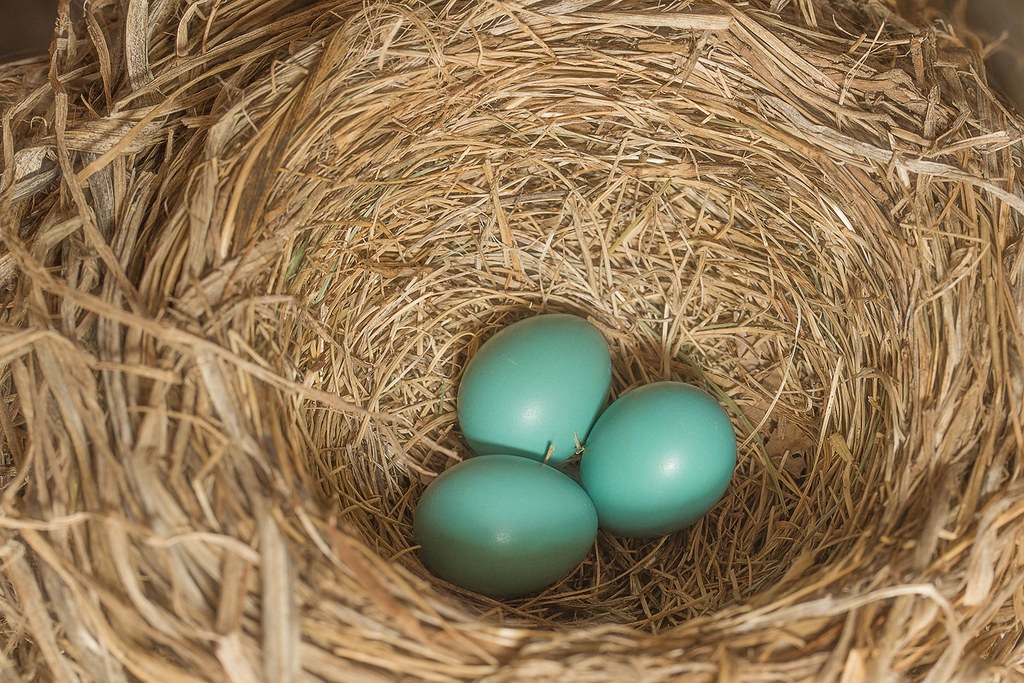
13. The Robin in Cultural Tapestry: Mythology and State Symbolism
Beyond its biological marvels, the American robin has woven itself deeply into the cultural fabric of North America, serving as a powerful symbol and a source of inspiration. Its enduring presence is officially recognized by three U.S. states—Connecticut, Michigan, and Wisconsin—where it proudly holds the esteemed title of state bird. Its iconic image even graced the 1986 Birds of Canada series Canadian $2 note, a testament to its widespread recognition and affection across national borders.
The robin’s striking appearance and familiar presence have long fueled human imagination, earning it a significant place in Native American mythology. A particularly poignant tale, strikingly similar to those surrounding the European robin, recounts how the American robin acquired its distinctive red breast by bravely fanning the dying embers of a campfire, an act of heroism that saved a Native American man and a boy from the cold. This narrative positions the robin not merely as a bird, but as a benevolent guardian and a symbol of warmth and sacrifice.
Further enriching its mythical standing, the Tlingit people of northwestern North America revered the robin as a culture hero, believing it was created by the powerful Raven specifically to delight the people with its melodious song. This attribution elevates the robin to a figure of profound spiritual and cultural importance, embodying joy and natural beauty. In a more modern, yet equally charming, cultural footnote, the “Peace Bridge robins” captured minor publicity in the mid-1930s. This particular family of American robins garnered attention for their prominently located nest on the Canadian side of the Peace Bridge, which connects Buffalo, New York, to Fort Erie, Ontario, illustrating the bird’s capacity to captivate public interest even in contemporary settings.
Its charm has also permeated popular music, notably in the enduring American classic “When the Red, Red Robin (Comes Bob, Bob, Bobbin’ Along),” a melody that encapsulates the bird’s energetic demeanor and its association with vibrancy. Even the iconic comic book superhero Robin, while initially inspired by an N. C. Wyeth illustration of Robin Hood, later embraced an origin story directly linking him to the bird, with his mother affectionately nicknaming him Robin because he was born on the very first day of spring, further cementing the bird’s symbolic connection to new beginnings.
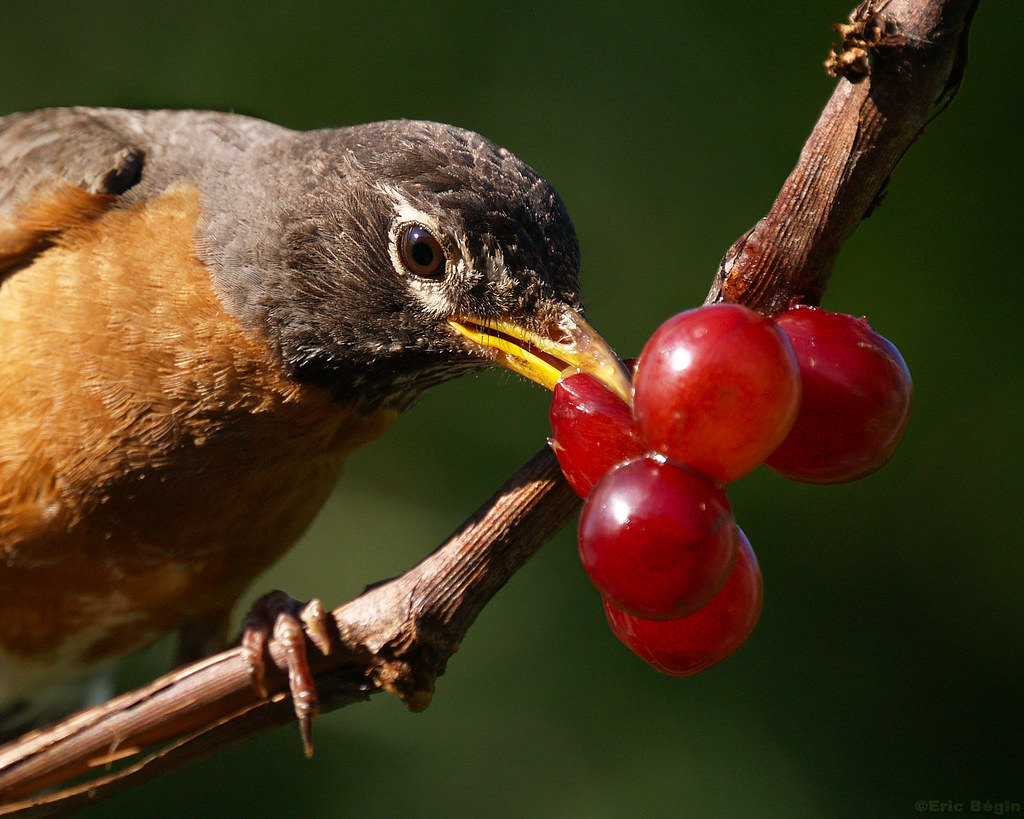
14. Enduring Symbols: The Robin as Harbinger of Spring and Prototypical Bird
Perhaps the most pervasive and cherished cultural association of the American robin is its widely held status as a symbol of spring, a vibrant herald of warmer days and renewed life. This symbolic role is beautifully articulated in poetry, such as Emily Dickinson’s evocative lines, “I Dreaded That First Robin So,” which captures the profound emotional response the bird’s return can elicit.
The theme of the robin as the harbinger of spring is echoed across various literary works, including William Henry Drummond’s “The First Robin.” This poem, according to the author’s wife, draws from a Quebec superstition that bestows good luck upon whoever catches the first glimpse of a robin in spring, further imbuing the bird with a sense of auspiciousness. Even in contemporary popular culture, the robin’s symbolic weight endures, as humorously depicted in a 1990 Calvin and Hobbes cartoon, where Calvin jubilantly anticipates his inevitable wealth and fame after spotting the season’s first robin, a testament to the cultural longevity of this charming belief.
The scientific reality behind this cherished sobriquet, “harbinger of spring,” is surprisingly precise. American robins are indeed keen followers of climatic cues, tending to track the 3°C (37°F) isotherm—a line connecting points of equal temperature—as they migrate north in spring and south in fall. This remarkable fidelity to temperature, rather than simply calendar dates, scientifically underpins their role as living indicators of seasonal transition, making their appearance a truly reliable sign of spring’s arrival.
Beyond its seasonal significance, the American robin holds a unique cognitive position. In a fascinating study conducted by Eleanor Rosch involving 209 psychology students at the University of California, Berkeley, the robin emerged as the most prototypical example of a bird in the students’ collective consciousness, even without specifying the species of robin. This finding underscores the robin’s deeply ingrained presence in the human mind as the quintessential avian form. Furthermore, the distinctive color of its eggs has given rise to a familiar shade, “robin egg blue,” a visual legacy that continues to color our world and honor this extraordinary species.
From the meticulous construction of its nest to the intricate melodies of its song, and from its surprising role in public health to its profound presence in human culture, the American robin truly is a marvel of the natural world. It stands not merely as a common garden bird, but as a complex creature whose life cycle, behaviors, and interactions offer a rich tapestry of ecological and cultural significance. As it continues its rhythmic dance with the seasons, the robin remains a cherished emblem of resilience, renewal, and the enduring beauty of North American wildlife, inviting us to look closer and appreciate the wonders it brings to our shared environment.



